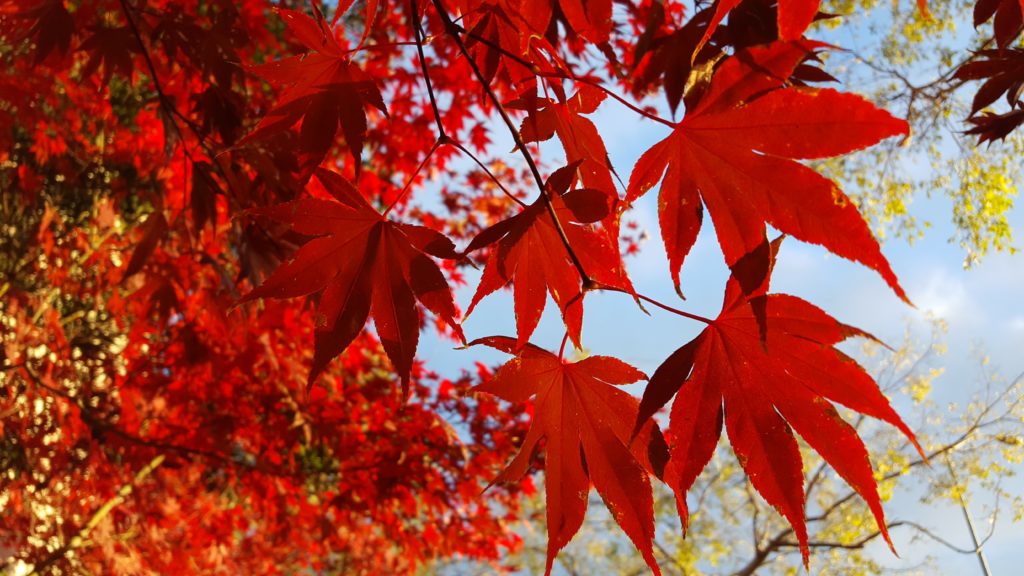- About Us
- Our Work
- Tree Info
- Get Involved
- Blog
- Volunteer
- Support Us
By Canopy Team on November 19, 2018

Tree Spotlight Series: Follow along as we learn about the fascinating trees that live among us. This series is in partnership with Rhee Lab in the Plant Biology Department of the Carnegie Institution for Science.
Other posts in the series: ginkgo biloba, Douglas fir, giant sequoia, Chinese tallow, silver-dollar gum, Monterey pine, green dracaena, coast live oak, and cork oak.
Enraged by Western missionary efforts, the Japanese closed off their country in 1639, only allowing Dutch merchants limited access to translators on an artificial island in the Bay of Nagasaki. Nearly 100 years later, the curious Swedish scholar Carl Peter Thunberg decided he would go to Japan and investigate the culture. Restricted by the xenophobic attitude of the time, Thunberg wrote notes to the few translators he had contact with, who were glad to exchange medical practices for botanical knowledge.
Soon, the word spread about a Western man who could help cure syphilis, forcing authorities to grant him more freedom to venture into the town and spread not only Western medicine, but also to teach the locals about European culture.
As time went on, Thunberg was permitted to travel to Edo, the court of the Japanese shogun, as he took notes as one of the sole European witnesses of 18th century Japan. Along that trip, he found a gorgeous tree which he named palmatum, after how the leaves were shaped like hands. Once he returned to Sweden, not only did his writings spark European interest in Japanese culture and society, but people were also enticed by a gorgeous tree Thunberg saw on his trip to Edo.
Europeans who saw his drawings of this tree wanted it in their exotic gardens, and the first specimen was planted in 1820 in England. Jump forward nearly 200 years, and this species, the Japanese maple or Acer palmatum, is highly valued across the world as an ornamental tree.
The Japanese maple has been planted in many parts of the world, where artificial selection for specific qualities has resulted in a wide range of variations, called cultivars. This deciduous tree has specimens that can range from measly 1.5 feet tall to nearly 82 feet tall, or 7.5 stories.
While most cultivars take on a dome-like form, the tree can be weeping or upright. Even the leaves have considerable variation, although most are long and wide and differ mainly in shape and color.
This species is quite delicate across its cultivars, as the shallow, fibrous roots can easily be outcompeted by more aggressive plants. The root system is vulnerable to drought, and therefore, the tree prefers persistent water conditions.
However, the tree will not be able to survive in soggy, waterlogged soil either, demanding appropriate soil drainage.
Despite many demands to survive, the Japanese maple pays off with a gorgeous ornamental tree. Since its roots are compact and noninvasive, the tree can be planted next to pathways as the roots will not interfere with pavement.
Furthermore, its tremendous genetic variation has resulted in many new cultivars being developed via artificial selection each decade, which survive in temperate zones across the world.
The qualities of cultivars are selected based on aspects such as leaf size and shape, bark texture and color, growth pattern, and many other qualities, resulting in many Japanese maples that look different from each other.
Some of the smaller cultivars are even popular as bonsai trees. Owing to not only its aesthetic beauty, but also to the tree’s many varieties, the Japanese maple has redefined many public spaces as a constant reminder of the beauty of the natural world.

Ankush Bharadwaj is a 2018 summer intern at the Rhee Lab in the Plant Biology Department of the Carnegie Institution for Science. He is currently an undergraduate student majoring in Microbiology, Immunology, and Molecular Genetics at the University of California, Los Angeles. His hobbies include being outdoors, where he usually spends his time kayaking, hiking, or simply skateboarding around.